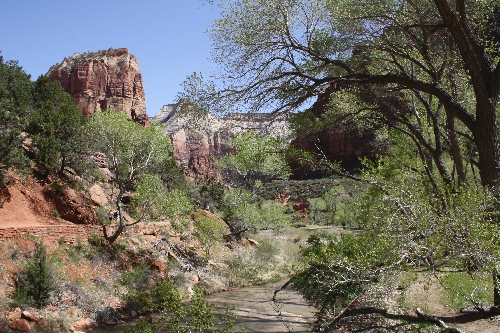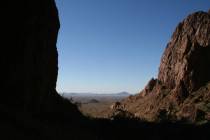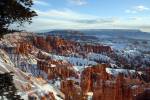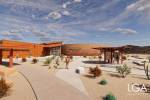Get ready for Angel’s Landing to stir your blood
If spring stirs your blood with the lust for a real adventure but you have limited time to seek one, you can nevertheless find a world-famous thrill so nearby you can return home the same day. If there is a seasoned Western hiker who doesn't aspire to visit Angel's Landing in Zion National Park, it's one of the dwindling few who haven't yet heard about this remarkable trail or one who has heard but is scared of it.
Although the trail is only about five miles round trip with an elevation gain of about 1,500 feet, this isn't a hike for children or for anyone scared of heights, for the last half-mile of travel takes you along a narrow ridge with drop-offs on both sides as deep as 1,200 feet. It is there that you use chains bolted into the rock to make your way. And even the most seasoned hiker had better hold onto them.
To reach the trailhead, take the free Zion shuttle up the Zion Canyon Scenic Drive and get off at the stop for Grotto Picnic Area. Walk across the road and over the footbridge, which crosses the North Fork of the Virgin River. Go right to the signed West Rim Trail, which serves as the lower part of the Angel's Landing Trail. The trail starts at an elevation of about 4,270 feet.
The trail is paved as it heads along the river and toward a wide canyon. You will be in a riparian woodland of Fremont cottonwoods and velvet ash at first, and as you continue, you will find a pinyon juniper plant community that also supports some manzanita, scrub oak and serviceberry.
Once you reach the steep canyon walls, the trail heads up a series of switchbacks that were carved into the rock back in the 1920s to access the hanging canyon above, called Refrigerator Canyon. This canyon is enjoyable to walk through as it is not only full of interesting formations but also big tooth maple and white fir, both rarities at this elevation of about 5,000 feet.
After hiking about a half-mile up Refrigerator Canyon, the trail makes an obvious right-hand turn, and you will be at the base of a second series of switchbacks called Walter's Wiggles. Named after Walter Reusch, the first acting superintendent of the park, these 21 short switchbacks climb up about 300 feet overall up to the saddle called Scout Lookout. This engineering feat made access up the steep wall possible.
Scout Lookout is the place where those who aren't up to the scary final climb to Angel's Landing -- and a lot of people decide they aren't up to it -- wait for hiking partners to complete it.
The final half-mile is a hard task both mentally and physically for most hikers. In one area, the ridge you hike along becomes so narrow that only one person at a time can travel across it.
Once on top, you have one of the finest views in the park. One of the best is looking south where you see the riparian ribbon of greenery that flanks the North Fork of the Virgin River. There's a wide, flat area to sit and enjoy these views or the sense of accomplishment at completing a hike that scared off many other people. There, you should think, "If I just did that, I can do other things I was afraid to try." At this point, you should pat your hiking partner's back. And if you didn't bring a hiking partner, you're entitled to pat your own.
Deborah Wall is the author of "Great Hikes, A Cerca Country Guide" and "Base Camp Las Vegas: Hiking the Southwestern States," published by Stephens Press. She can be reached at deborabus@aol.com.




























